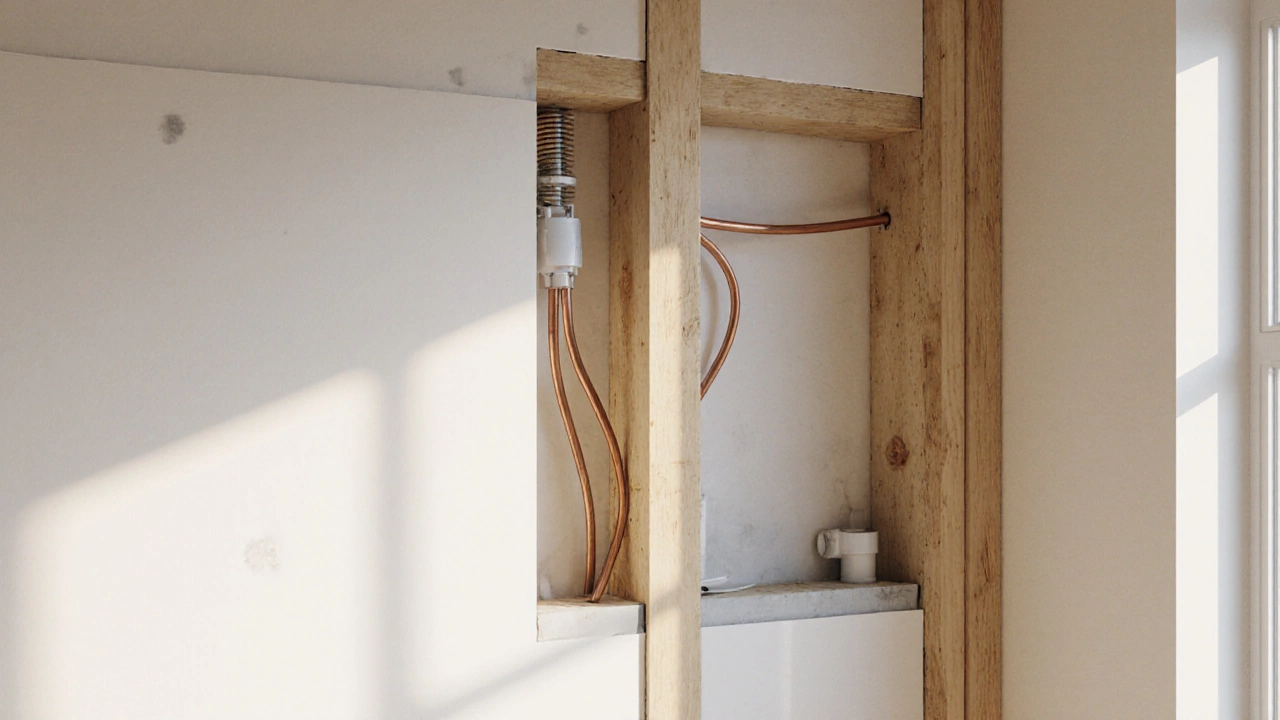Drilling Into New Build Walls: What You Need to Know
Learn how to safely drill into new build walls, understand regulations, locate studs and services, pick the right tools, and avoid common mistakes.
When you’re building a new home or commercial space, new build wall safety, the structural and fire-resistant design of walls in newly constructed buildings. Also known as structural wall integrity, it’s not just about holding up the roof—it’s about keeping people alive in case of fire, earthquake, or unexpected load. Many builders focus on speed or cost, but cutting corners on walls can lead to collapse, mold, or insurance denial. In India, where construction is booming, knowing what makes walls safe isn’t optional—it’s basic.
Building codes, official rules that dictate how walls must be built to ensure safety and durability are the foundation of wall safety. They don’t just list materials—they control thickness, spacing, fire ratings, and even how fast you can dry plaster. For example, a load-bearing wall in a two-story house needs thicker steel studs or reinforced concrete than a non-load-bearing partition. And if you’re mixing materials—like brick below and timber above—you need fire separations that meet local standards. Ignoring these isn’t a shortcut; it’s a liability.
Wall materials, the physical components used to construct walls, including concrete, brick, steel, and engineered wood make a huge difference. Galvanized wire, for instance, isn’t just for fencing—it’s used to tie brickwork together, anchor plaster, and reinforce block walls. Without proper wire mesh or steel reinforcement, even a strong wall can crack under stress. Modern builds use low-carbon concrete and fire-rated drywall, but many contractors still use outdated or substandard materials just to save a few rupees. That’s where KK Wire Solutions steps in: we supply industrial-grade wire that meets construction safety standards, helping builders avoid weak joints and crumbling walls.
Wall safety isn’t just about what you put in the wall—it’s about how you put it together. Fastening, curing, ventilation, and even the order of installation matter. Tiling walls before the floor? That’s fine—but if the wall isn’t properly anchored first, moisture can seep in and rot the framing. Foundation settlement? It can pull walls apart. You can’t fix a bad wall after the fact—you have to build it right from the start.
What you’ll find in the posts below isn’t theory—it’s real-world advice from builders, inspectors, and homeowners who’ve seen what happens when wall safety is ignored. From identifying bad cracks to choosing the right materials for new builds, these guides give you the facts you need to make smart decisions. No fluff. No marketing. Just what works—and what doesn’t—when it comes to keeping walls strong, safe, and lasting.

18 October
Learn how to safely drill into new build walls, understand regulations, locate studs and services, pick the right tools, and avoid common mistakes.